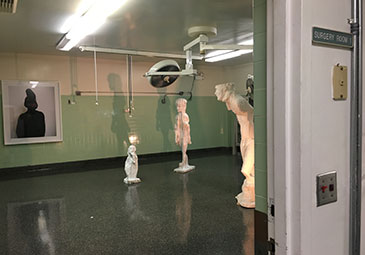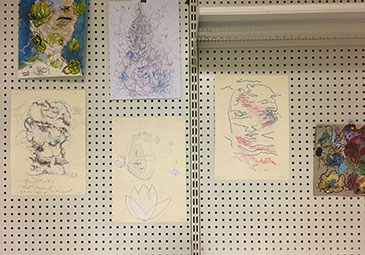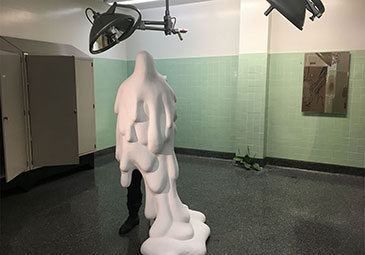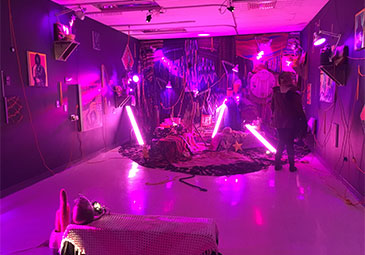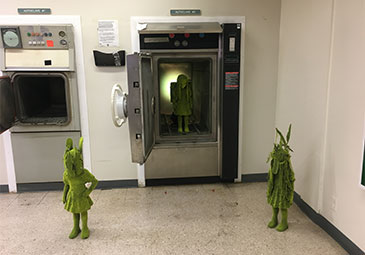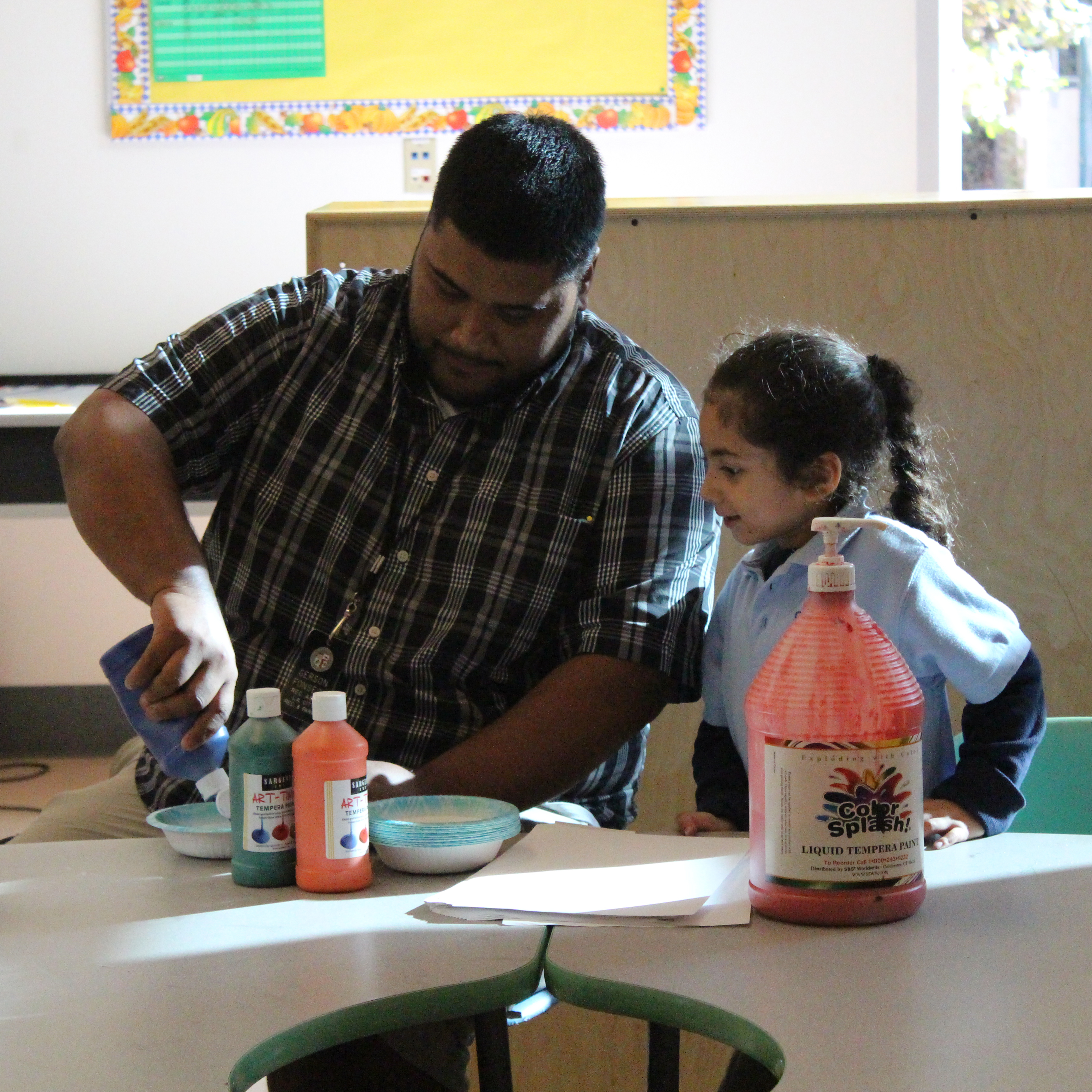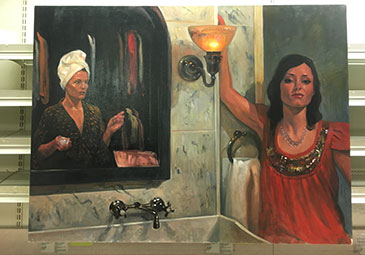
 Christopher Reynolds
Christopher Reynolds The man behind the exhibit
How human condition came to be
John Wolf, the curator of Human Condition, was raised in Lancing, MI and attended Baylor University in Waco, TX. After college, Wolf originally worked in the film industry. However, as a business major and an art history minor, he knew that he wanted to turn his love of art into a career. "It gave me a feeling of sense and purpose," Wolf recalled of his early love for art. "So that’s really what inspired me to pursue it professionally."
Wolf began his career in the art world by selling art to private companies. But selling art was not enough to satisfy his creative ambitions. "I turned to curating because I thought that's where I could really engage with art," said Wolf.
In 2009, Wolf started his own company called John Wolf Art Advisory. His company curates for private collectors, corporations and other individuals and organizations looking to customize their art collections. Despite his experience as an art curator, Wolf says that Human Condition has been a curating experience unlike any other.
"Human condition stemmed out of my desire to make sense of the lack of feeling that I witness on a daily basis," Wolf said. He had the idea for the exhibit and the kind of art he wanted in it long before he knew where the exhibit would be located.
But, by a stroke of luck, a client Wolf was curating for, CIM Group, mentioned that the company had purchased an abandoned hospital in Jefferson Park, Los Angeles—the former Los Angeles Metropolitan Medical Center (LAMMC). To Wolf, the location instantly made perfect sense. "I couldn’t imagine a better place to create an exhibit that delves into the vulnerability of life than a place where people lost their lives, said goodbye to loved ones, and brought people into the world. I knew it was a perfect place to bring this theme I had been envisioning to life," Wolf said.
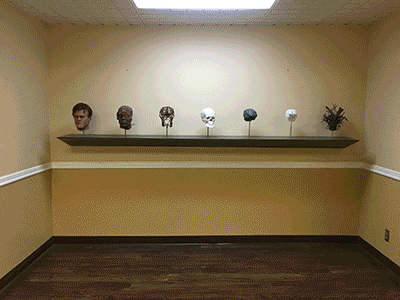
Throughout the exhibit, papers, furniture, and pictures that were all left behind serve as a reminder of the tenants that once inhabited the building. Together, these elements add to the building’s sense of abandonment. Wolf believes that the location, as well as the state it was left in, allows viewers to become more engaged with the art through the immersive atmosphere of the space.
For Maro Mercene, a former employee of LAMMC, these remnants make him feel a deep nostalgia. Mercene was the IT director at LAMMC for 35 years. He attended the exhibit on it's opening night, and described the experience as overwhelmingly sentimental.
"I went back to the room where my office was and my handwriting was still on the whiteboard," Mercene recalled. "When I walked around the building, the wires and cabling that I set up were still there."
Mercene has fond and vivid memories of the hospital. "I worked there for so long and started when I was very young, so some part of me feels like I grew up there. Human Condition was great work, but seeing it so abandoned brought tears to my eyes. It made me remember that it's never coming back," Mercene said.
But Mercene was not the only person to have such strong feelings toward the exhibit. According to Wolf, exhibit goers have had extremely visceral and emotional reactions to Human Condition: reactions that would have been much different had the collection been shown in a "white walled museum," as Wolf put it.
"I just overheard someone say that they need to go get a shot of tequila after walking through the exhibit, and that’s exactly what I want. I want people to feel something. I don’t care what it is. I just want them to feel," Wolf said. These reactions reinforce Wolf's idea that the location of Human Condition is an integral part of the exhibit as a whole.
Since its grand open in October to its close at the end of November, over ten thousand people walked through Human Condition, which Wolf considers to be a major achievement since he has never curated a collection on such a scale before. Being the biggest project he has worked on, when first deciding to use the hospital as the location, he had little idea of how big the exhibit itself would actually be and how much art he would need to fill it.
Wolf and his assembly team began arranging Human Condition on Sept. 1, 2016: one month from the exhibit’s opening night. With artwork from over 80 artists that spans an area of approximately 40,000 square feet, it’s no surprise that placing the artwork was no easy task. According to Wolf, much of his brainstorming and ideas regarding art placement happened when he was laying in bed at night imagining the different pieces and where they would best fit. Wolf described the placement process as "a game of trial and error" where he would spend days moving individual pieces around until he was satisfied.
Wolf’s favorite piece in the exhibit is a 6 ft. tall ceramic statue, made by artist Matt Wedel, which is located in one of the hospital’s surgery rooms. "Something about it just captures youthful curiosity and innocence," Wolf said of the sculpture.

The exhibit’s last day was on Nov. 30. In the coming weeks, collectors who have purchased art displayed in Human Condition will pick up their work. The rest of the pieces will be packed and shipped back to their artists. After the exhibit has been taken down, CIM Group will begin the demolition process and transform the building into a residential complex.
For Wolf, the exhibit's end is bittersweet. "There is a sense of relief, but, at the same time, it’s sad that this is all coming to a close," he said.
While Wolf didn't want to reveal his ideas for upcoming projects, he said that Human Condition has lit a spark of creativity within him that was always there but needed to be ignited. So, while he plans to continue to curate for businesses and art collectors, Human Condition has introduced him to a new world of creative curating that he is determined to pursue.
Exhibit goers describe Human Condition in one word:
Los Angeles Metropolitan Medical Center
A brief history
